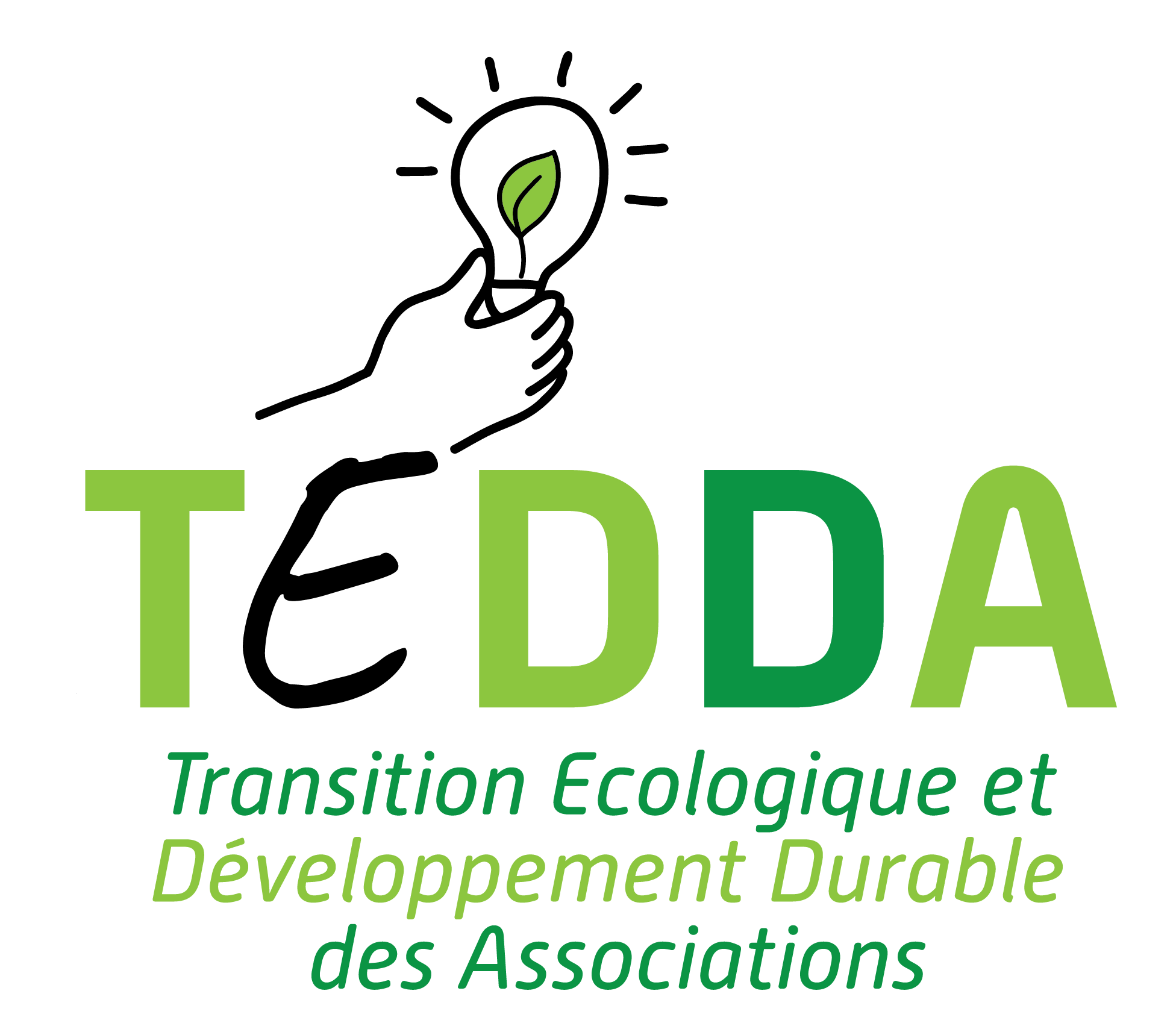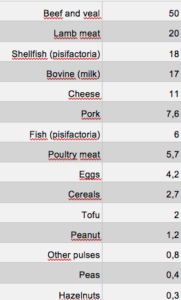
03 Oct A transition and good meals for your association
After the eco-responsible events, let’s focus on the issue of food, a central theme of the ecological transition.
We know that it is largely involved in climate change. In Europe, about 10% of greenhouse gas (GHG) emissions are caused by agriculture (1). But there are differences between the member countries. In Spain (2) and France, for example, around 24% of greenhouse gas (GHG) emissions come from agriculture, followed by transport, and up to 34% in France, if we consider the entire food chain from field to table (3). But where do they come from? What actions can your small or medium-sized association take, for your events, your meals at work or at the restaurant?
Food weighs heavily on the global warming scale
It is important to remember: not all ingredients have the same weight in the food, just as it is essential to look at the life cycle of the food. Thus, there are clear disparities according to seasonality (direct sales vs. cold storage), cultivation methods (conventional vs. agro-ecology), breeding (intensive vs. extensive), origin (local vs. global), or the number of intermediaries that were necessary to prepare and distribute our food and processed products (home cooking vs. processed products)
Let’s take a few points of reference to get a better idea:
- Highest and lowest emissions of 15 ingredients (in Kg eq CO2, per 100 g protein):
(Source: Poore, 2018)
- A fruit grown in a climate-controlled greenhouse generates 6 to 9 times more emissions than the same fruit grown in season.
- A recent study carried out by Barcelona City Council analysed that 1 kg of seasonal apples transported by ship from New Zealand produced 4.1 kg eq CO2, compared to 4.4 kg eq CO2 for 1 kg produced locally but stored for months in cold storage (therefore out of season).
Most emissions come from the agricultural production phase. The rest “is related to the manufacture, packaging, processing, transport and marketing of food (20 %), the movement of customers to the shops (11 %), the management of food waste (7 %)” (3 – French data).
In the production phase, livestock is responsible for 80% of emissions. This is mainly due to the production of animal feed and ruminants (cows, sheep) that belch methane (CH4) during digestion, a gas with a warming power 24 times higher than CO2. This is why the carbon footprint of cattle or sheep is much higher than that of pigs or poultry..
Then comes the problem of nitrous oxide (N2O), which is released from manure as well as from the application of synthetic fertilisers. This gas has a warming effect 300 times greater than CO2.
On the balance, therefore, all experts agree on one essential point: it is urgent to reduce our consumption of meat, mainly red meat. The land grabbing caused by livestock farming worldwide is immense, especially when compared to its nutritional contribution (‘it provides only 16 % of the calories consumed worldwide, according to the Institute for Climate Economics-I4CE) (4). In particular, it is directly involved in deforestation in Brazil for the production of seeds, oils and soya meal to feed animals in Europe. Thus, according to the FAO and its first reference report “Livestock’s Long Shadow” (2006), livestock farming accounts for at least 14.5% of global greenhouse gas emissions.
Therefore, even if the trend in meat consumption is decreasing in Western Europe, it is increasing overall, especially in Eastern Europe. The European average is 77 kg/year, or 211 g per day (5). This is far from the recommendations of the High Council of Public Health (in France), which suggests not to exceed 500 g per week (except poultry) (6), or even those of the EAT – LANCET reference report (see link in the resources below), which recommends consuming no more than 100 grams of red meat per week to keep our diet within planetary limits.
As you have already understood, it is essential that we vegetate our plates, bearing in mind that the conversion of land currently monopolised by livestock farming into crops would allow several billion tonnes of CO2 to be captured (7).
In practice, for your events
Having to organise catering for an event, or even an in-house celebration, often leads us to opt for economic offers that are not in line with healthy and sustainable food. However, these occasions are important to include your association in the transition of the agri-food system and to give your teams the pleasure of eating better. It is therefore important to target sustainable service providers who take into account public health issues (overweight, diabetes, etc.) but also social, economic and environmental issues (fair remuneration of suppliers, employment of people in precarious situations, protection of natural resources, fight against food waste, etc.).
To do this, as recommended in Ademe’s guide “Pour une restauration événementielle durable” (in French) (8), the first step is to draw up specifications, in which you can specify your selection criteria:
- Fresh, seasonal and local food, preferably organic,
- Mostly vegetarian menu, asking to readjust the portion of vegetables in the dishes, which should be higher than the portion of meat or fish,
- Hot drinks from fair trade,
- Water jugs instead of plastic bottles,
- Choice of reusable tableware,
- Quality meat (pasture-raised, labelled),
- Sustainable fish products
- etc.
Plan to discuss with your suppliers the proportion given to each action (100% or less) and to ask for guarantees on the labels used (organic, fair trade, etc.).
To combat food waste, the Achilles heel of events, several actions can be taken to minimise it:
- Coordinate with your supplier the date closest to the event to inform the exact number of guests (allow for last minute cancellations).
- Offer menu options to attendees during registration to ensure demand is satisfied.
- Provide dry ingredients (without risk to health) that can be redistributed if necessary to the participants in the form of take away.
- Once the event is over, ask to calculate the losses per guest in order to better adjust your orders in the future.
“In France, food losses and food waste represent 10 million tonnes per year, with a theoretical market value of 16 billion euros and about 3% of the greenhouse gas emissions of French activity”. (source: ecologie.gouv.fr)
In practice, meals in the office or in the restaurant
As collective catering is not very present in the associative sector, let’s focus on meals brought from home or consumed in restaurants.
Start by creating a friendly kitchen area, equipped with the necessary equipment to encourage home-cooked meals, as well as communication spaces to raise awareness among your employees.
From a simple coffee machine to a “kitchen” corner, the few square metres that separate them can have a real impact. The usual teas, herbal teas, microwaves and fridges can be accompanied by a few kitchen utensils, non-disposable plates and chopping boards.
In your communication space, we recommend bringing a personal and collaborative style to it..
If the seasonal fruit and vegetable calendar, the food pyramid, the Harvard healthy plate are always welcome, it is worth exploring ideas to turn your space into a unifying and motivating project, which contributes to the psycho-emotional well-being of your teams. Encourage recipe sharing, launch challenges and debates (on processed products, for example), or even organise cooking workshops from time to time to prepare varied, healthy and sustainable meals. For example, you can help your teams to better integrate and combine cereals and pulses, the winning duo approved by many nutritionists and sustainable food specialists.
For those who go to a restaurant for lunch, sustainable restaurant labels can help them to choose or simply measure the criteria that associate the environment and the food. Among the most important criteria, we should find the following on the menu:
- Respect for the seasons
- Local products
- A relatively large vegetarian offer.
- Organic products
In Europe, you can find the Ecocook, Slow Food and FIG labels. More specifically in France, you can find Ecotable, without doubt the most complete, but also Green Food.
In any case, it is recommended not to systematically order animal protein when going to a restaurant (a growing trend as meat consumption at home is gradually decreasing). This will push restaurateurs to develop a more diverse and attractive vegetarian offer.
In conclusion:
No more meals in front of the computer, explore the seasons, explore production methods, eat less meat and have fun! You can go for lunch now… and when you come back, we advise you to have a look at the report below, as well as some resources to explore this topic. Enjoy!
________________
If only I had a single report to explore the issue further:
“Food, planet, health”, EAT Lancet (available in different languages)
- https://www.eea.europa.eu/es/senales/senales-2015/articulos/la-agricultura-y-el-cambio-climatico
- https://www.miteco.gob.es/en/cambio-climatico/temas/mitigacion-politicas-y-medidas/agricola.aspx
- https://reseauactionclimat.org/poids-alimentation-emissions-gaz-a-effet-de-serre/
- https://www.lemonde.fr/planete/article/2019/03/01/l-alimentation-mondiale-responsable-d-un-tiers-des-emissions-de-gaz-a-effet-de-serre_5429989_3244.html
- https://www.european-datalab.com/la-consommation-de-viande-en-baisse-en-europe-de-louest/
- https://www.inrae.fr/actualites/quels-sont-benefices-limites-dune-diminution-consommation-viande
- https://youmatter.world/fr/vegetaliser-alimentation-stocker-carbone-climat/
- https://librairie.ademe.fr/consommer-autrement/1758-pour-une-restauration-evenementielle-durable-9791029709647.html





